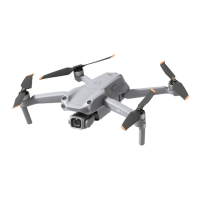no possibility of injury.
WARNING: Procedures, which if not properly followed, create the probability of property damage, collateral
damage, and serious injury OR create a high probability of superficial injury.
Intelligent Flight Battery Safety Guidelines
WARNING
1. DO NOT allow the batteries to come into contact with any kind of liquid. DO NOT leave the batteries out in the
rain or near a source of moisture. DO NOT drop the batteries into water. If the inside of a battery comes into
contact with water, chemical decomposition may occur, potentially resulting in the battery catching on fire, and
possibly leading to an explosion.
2. DO NOT use non-DJI approved batteries or chargers. Go to http://www.dji.com to purchase new batteries or
chargers. DJI takes no responsibility for any damage caused by non-DJI batteries or chargers.
3. DO NOT use or charge swollen, leaky, or damaged batteries. If the battery is abnormal, contact DJI or a DJI
authorized dealer for further assistance.
4. The batteries should be used at temperatures between 0° and 40° C (32° and 104° F). Use of batteries in
environments above 50° C (122° F) can lead to
fire or explosion. Using batteries below 0° C (32° F) will severely reduce performance.
5. DO NOT disassemble or pierce a battery in any way or it may leak, catch fire, or explode.
6. Electrolytes in batteries are highly corrosive. If any electrolytes make contact with your skin or eyes,
immediately wash the affected area with water and see a doctor immediately.
7. Put out any battery fire using water, sand, or a dry powder fire extinguisher.
8. Keep the batteries out of the reach of children and animals. Seek professional medical support immediately if
children accidentally swallow parts of the battery.
9. DO NOT use a battery if it was involved in a crash or heavy impact.
10. The battery subjected to extremely low air pressure that may result in an explosion or the leakage of flammable
liquid or gas.
11. DO NOT charge a battery immediately after flight, because its temperature may be too high. DO NOT charge a
battery until it cools down to near room temperature. Charging a battery outside of the temperature range 5° to
40° C (41° to 104° F) may lead to leakage, overheating, or battery damage. The ideal charging temperature
range is 22° to 28° C (71.6° to 82.4° F ).
12. DO NOT leave a battery near heat sources such as a furnace or heater. DO NOT leave a battery inside of a
vehicle on hot days.
13. Keep the batteries dry. Never drop the batteries into water.
14. DO NOT store the battery for an extended period after fully discharging it. Doing so may over discharge the
battery and cause irreparable battery cell damage.
15. The battery will enter hibernation mode if depleted and stored for a long period. Recharge the battery to bring it
out of hibernation.
NOTICE
1. Regularly check the battery level indicators to see the current battery level. The battery is rated for 200 cycles.
It is not recommended to continue use after 200 cycles.
2. The battery will discharge to 60% automatically if not used five days or more for extending the battery life.
Check the battery level and charge the battery before using it again.
3. Remove batteries when storing the aircraft for an extended period.
4. Disconnect the batteries from the charging device when they are fully charged.
5. Store the batteries in a clean environment to avoid stains or dirt being stuck in the battery buckles.
6. Clean the battery terminals with a clean, dry cloth.
7. Never store the batteries in environments below -10° C (14° F) or above 45° C (113° F).
8. Battery life may be reduced if not used for a long time.
9. Fully charge and discharge the battery at least once every 3 months to maintain battery health.
Flight Condition Requirements
WARNING

